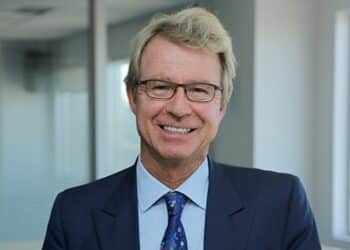With Australian investors preparing for a world of lower interest rates, asset managers from Perpetual to Schroders are competing for a slice of the fastest-growing segment of the domestic exchange-traded fund (ETF) market: fixed income ETFs.
Once the exclusive domain of large institutions, fixed income ETFs are now empowering retail investors, self-managed super funds (SMSFs), financial advisers, and institutions alike with greater accessibility, liquidity and transparency, effectively democratising a crucial asset class that was historically difficult to reach.
For many, including head of Australian fixed interest at Janus Henderson, Jay Sivapalan, a key benefit of fixed income in an ETF wrapper is the enhanced accessibility and reach it offers.
“In today’s fast-moving markets, this allows investors to take tactical positions and seize potentially fleeting opportunities to reduce risk and generate additional returns,” he said.
The investment firm listed its Janus Australian Fixed Interest Active ETF (JFIX) on Cboe Global Markets in February, joining Janus’ existing local product suite which already included two active fixed-interest ETFs.
Sivapalan said offering fixed income options through ETFs has led to broader investor interest in the asset class.
“Both self-directed investors and those guided by brokers and advisers can flexibly use ETFs to diversify their portfolios and improve risk-adjusted returns, with potential to gain immediate exposure during the trading day,” he said.
He also pointed to a demographic shift, noting that older investors are increasingly looking for defensive, higher-income options like fixed-income ETFs, while moving away from more traditional equity-based investments.
Sebastian Mullins, Schroders Australia’s head of multi-asset and fixed income, agreed that ETF wrappers have extended bond market investing to new players.
“In particular, self-directed investors (including SMSFs) and brokers are now able to trade active strategies via ETF wrappers from a long list of active managers that were only once accessible through traditional managed funds,” he said.
Schroders similarly added to their collection of credit and fixed income ETFs in February with the introduction of their High Yielding Credit Fund Active ETF.
Speaking at the firm’s national briefing this month, Mullins expressed a very positive outlook for Australian credit, noting that this particular ETF is among their top performers.
He explained that for retail investors and SMSFs – which traditionally relied on direct investments or term deposits – the attractive “anytime and anywhere” transaction style of ETFs is a key reason for their early adoption.
Advisers are also increasingly using ETFs to improve transparency and tax efficiency within managed accounts, despite initially being slow on the uptake, according to Mullins.
Perpetual’s August launch of its first active fixed income and credit ETF marked an even broader industry shift – with a traditional fund manager now fully embracing the ETF wrapper.
Greg Stock, head of credit research and senior portfolio manager at Perpetual, similarly noted that the reduced minimum investment requirements of ETFs lower barriers to entry.
Adding to this, he said the combined attributes of T+2 settlement, intraday pricing and no extra paperwork for investors with stockbroking accounts make ETFs more convenient than traditional bond investment frameworks.
“This removes some of the friction associated with traditional fixed income investment like locking up cash in a term deposit or facing redemption restrictions from unlisted funds,” he said.
Stock also highlighted daily holdings disclosures as an advantage, offering investors more transparency which fosters confidence and understanding.
Meanwhile, Betashares is Australia’s largest provider of cash and fixed income ETFs, much of which has grown only in the last few years.
Betashares began focusing on its extensive range of fixed income ETFs around 2017.
Speaking with InvestorDaily, Chamath De Silva, the firm’s head of fixed income, explained that it saw the potential for ETF wrappers to offer scalable “building blocks” – enabling investors to efficiently construct diversified fixed income portfolios.
“That’s really the opportunity we saw and we’ve leaned into it and it’s been a good decision for us,” he said.
Unlike many competitor fixed income ETFs launched over the past 18 months or so, their range has primarily focused on passive investing options.
These are based on superior indexing and smart beta strategies, offering numerous active management benefits at a reduced cost.
Despite active ETFs standing out in terms of product proliferation in recent times, De Silva said flows are still overwhelmingly going towards index tracking products.
“There is still a big focus on costs and building well diversified portfolios in a very cost-effective manner,” he said.






